Figures & data
Figure 1. Flow diagram for the systematic evidence map on migrating and extractable food contact chemicals (FCCs), containing the preferred reporting items for systematic reviews and meta-analyses (PRISMA). *Based on two literature searches in Jan/Feb 2019 and May/June 2021. SCOPUS was excluded from the second search due to the inclusion of only three unique references during the first screening round. **More than one exclusion criterion could be applicable to a given record. ***Papers on active packaging were excluded because migration of active substances is generally intended and hence not in the scope of this evidence map. Abbreviations: FCA, food contact article; FCM, food contact material.
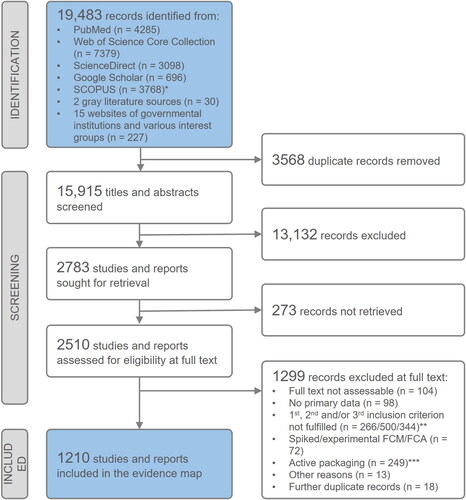
Figure 2. Data generation process. Question types and number of database entries for each included study/report related to the investigated chemicals, food contact articles (FCAs), food contact materials (FCMs), type of experiment, and evidence of detection. *For more detailed information on the FCM groups, see and Table S1.
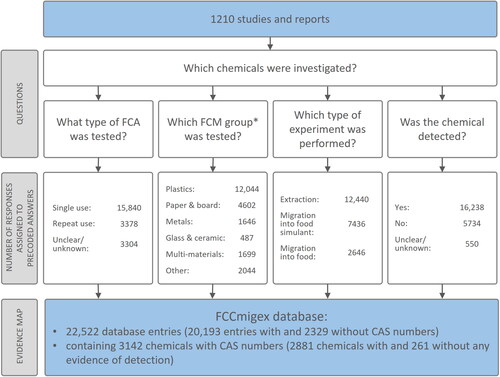
Figure 3. Universe of known FCCs. Schematic representation of the number of intentionally used FCCs (source: FCCdb; gray circle), the number of FCCs with evidence of migration/extraction (source: FCCmigex; orange circle) and their overlap (orange field). Together, these databases characterize the universe of known FCCs (blue border).
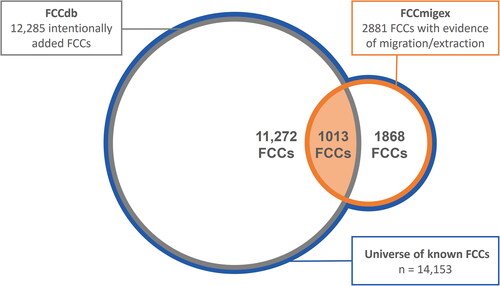
Figure 4. Number of database entries in the FCCmigex database for six FCM groups comprising 28 FCM types. The FCM group on Plastics (1.) includes 12 FCM types (from bottom to top of column, number of database entries in parentheses): plastics, non-specified or other (n = 2760), PE (n = 1842), PP (n = 1763), multilayer plastic (n = 1306), PET (n = 1258), polystyrene (n = 880), polyamide (n = 753), polyvinyl chloride (n = 736), polycarbonate (n = 437), rPET (n = 207), melamine (n = 84), polyurethane (n = 18). The other five FCM groups display data for 2. Paper & Board (paper & board, virgin or non-specified (n = 3164), paper and board, recycled (n = 1438)), 3. Metals (metal, non-specified or other (n = 1006), steel (n = 477), aluminum (n = 189)), 4. multi-materials (n = 1699), 5. Glass (n = 242) and Ceramic (n = 219), and 6. Other FCMs (silicone (n = 478), unclear/unknown FCM (n = 447), other FCM (n = 422), rubber (n = 218), wood (n = 192), cork (n = 170), combined FCMs (n = 91), and textiles (n = 26)).
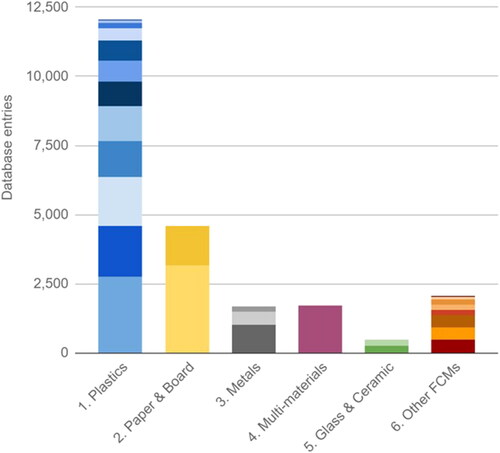
Figure 5. FCMs as sources of FCCs. Frequency of database entries in the FCCmigex database for FCM types of the “additional” FCM category, shown for the six main FCM groups. Potential sources of FCCs are: printing inks (red), coatings (yellow), adhesives (green), plastic laminates (blue), and waxes (magenta). Database entries without an FCM of the additional category are light gray, and those that are unclear/unknown are dark gray.
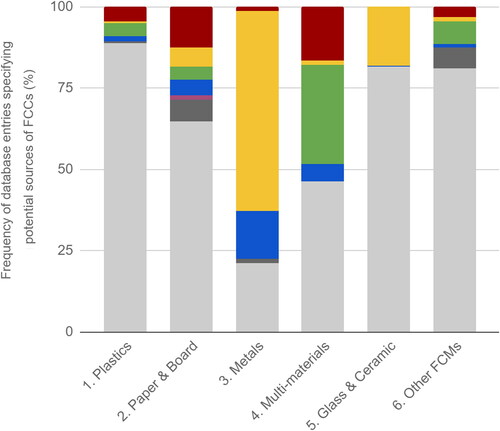
Figure 7. Top five most frequently detected FCCs (database entries) across all FCM groups and for each of the six individual FCM groups. Abbreviations: BPA, bisphenol A; DBP, dibutyl phthalate; DEHA, diethylhexyl adipate; DEHP, diethylhexyl phthalate; DiBP, diisobutyl phthalate; MOAH, mineral oil aromatic hydrocarbons; MOSH, mineral oil saturated hydrocarbons; D5, decamethylcyclopentasiloxane; D6, dodecamethylcyclohexasiloxane. *MOSH and MOAH were included due to their high relevance despite being chemical mixtures and not individual FCCs.
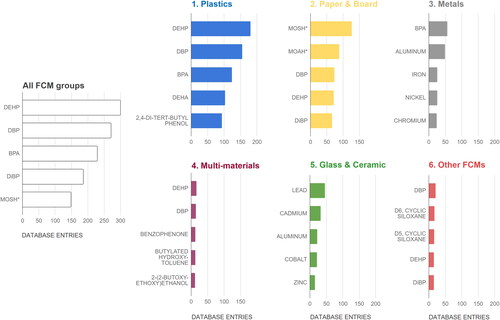
Supplemental Material
Download PDF (280.4 KB)Data availability
The data are publicly available as an interactive dashboard using Microsoft PowerBI under the following open access link (https://www.foodpackagingforum.org/fccmigex). The list of references included in this evidence map is also available under this link.

